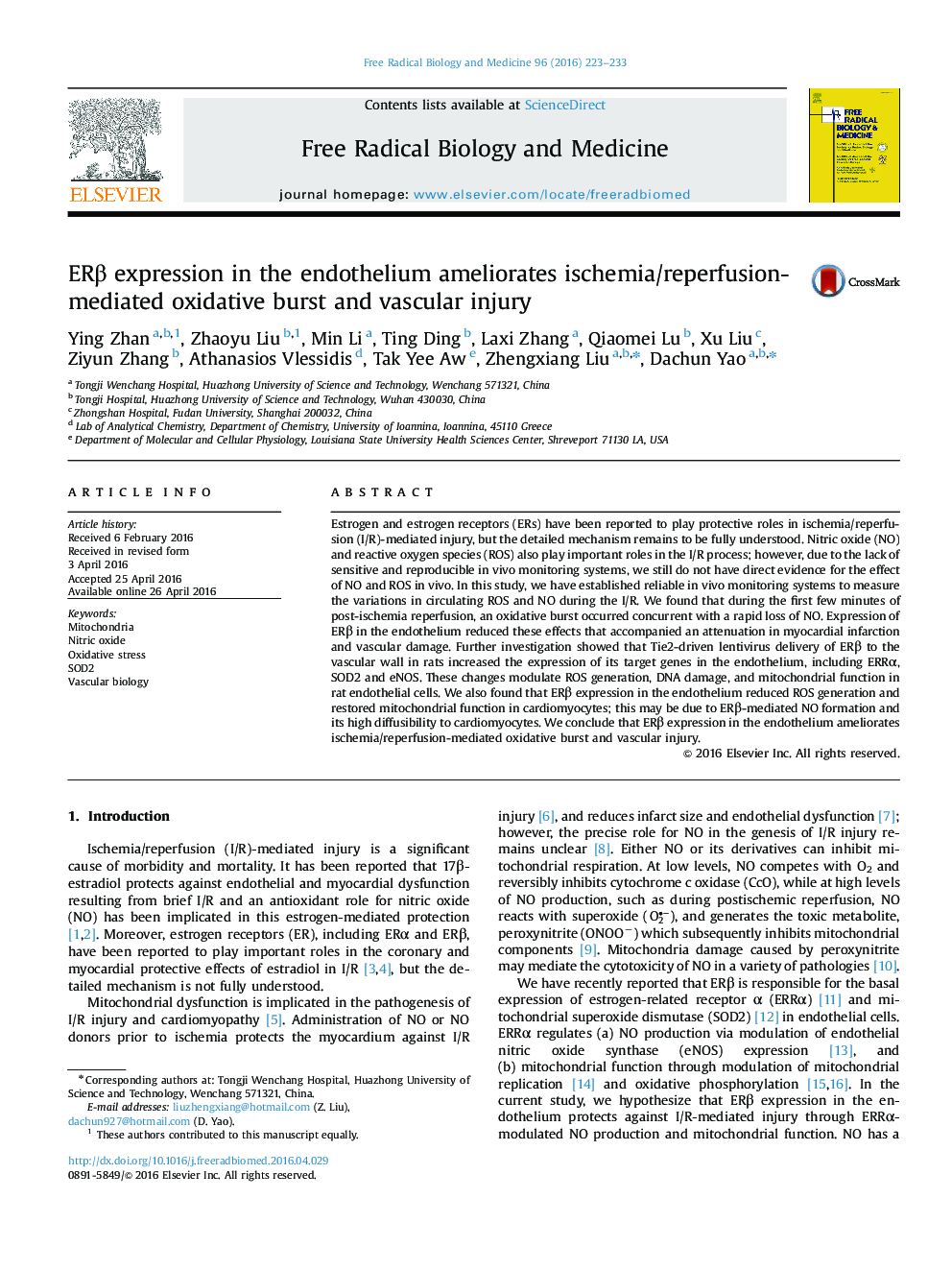| Article ID | Journal | Published Year | Pages | File Type |
|---|---|---|---|---|
| 8267731 | Free Radical Biology and Medicine | 2016 | 11 Pages |
Abstract
Estrogen and estrogen receptors (ERs) have been reported to play protective roles in ischemia/reperfusion (I/R)-mediated injury, but the detailed mechanism remains to be fully understood. Nitric oxide (NO) and reactive oxygen species (ROS) also play important roles in the I/R process; however, due to the lack of sensitive and reproducible in vivo monitoring systems, we still do not have direct evidence for the effect of NO and ROS in vivo. In this study, we have established reliable in vivo monitoring systems to measure the variations in circulating ROS and NO during the I/R. We found that during the first few minutes of post-ischemia reperfusion, an oxidative burst occurred concurrent with a rapid loss of NO. Expression of ERβ in the endothelium reduced these effects that accompanied an attenuation in myocardial infarction and vascular damage. Further investigation showed that Tie2-driven lentivirus delivery of ERβ to the vascular wall in rats increased the expression of its target genes in the endothelium, including ERRα, SOD2 and eNOS. These changes modulate ROS generation, DNA damage, and mitochondrial function in rat endothelial cells. We also found that ERβ expression in the endothelium reduced ROS generation and restored mitochondrial function in cardiomyocytes; this may be due to ERβ-mediated NO formation and its high diffusibility to cardiomyocytes. We conclude that ERβ expression in the endothelium ameliorates ischemia/reperfusion-mediated oxidative burst and vascular injury.
Related Topics
Life Sciences
Biochemistry, Genetics and Molecular Biology
Ageing
Authors
Ying Zhan, Zhaoyu Liu, Min Li, Ting Ding, Laxi Zhang, Qiaomei Lu, Xu Liu, Ziyun Zhang, Athanasios Vlessidis, Tak Yee Aw, Zhengxiang Liu, Dachun Yao,
